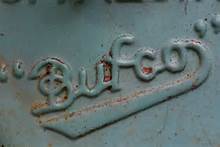
Roof Mounted Fans and Gravity Ventilators
Centrifugal Inline
Tubular, Mixed Flow and Axial Fans
Centrifugal Ceiling and Cabinet
Exhaust and Supply Fans
Utility, Centrifugal & Radial Blowers
Fume Exhaust Systems
Laboratory Exhaust Systems
Kitchen Ventilation Systems
Compact
Pressure Blowers:
Canada Blower Pressure Blowers
are ideal for combustion air, pneumatic
conveying systems, fluid bed aeration, cooling, drying systems, and
recommended to use in various high pressure fan applications.
Canada Blower Company is a
Distributor of industrial process and commerical ventilation equipment.
Canada Blower fans are known for the highest industrial duty quality
and reliability for many years across North America.
Specific to air handling
units, there are a number of ways to improve the performance of fan
systems. In HVAC systems, fans use roughly 40% of all electricity. The
problem is that even by following all of the proper procedures in
selecting fans for HVAC use, low total efficiency persists. While a few
of the fans had an efficiency between 50% and 60%, the majority reached
only 33% for total efficiency.
For the most part, there is
tremendous potential for improving on energy consumption of fan
systems. Whether commercial, residential, or industrial fans in Canada,
as much as 50% electricity could be saved with a more efficient design,
as well as better strategies for control. Below are some examples of
how the performance of fan systems can improve.
Variable Frequency Drive – A
Variable Frequency Drive (VFD) is designed to adjust the speed of an
electric motor based on load. Therefore, the motor speed is reduced and
energy is saved. The exact efficiency of the VFD alone varies since the
nominal output along with partial load cause the drive to lose between
2% and 5% of torque and speed. However, by implementing a Variable
Frequency Drive in many applications, performance improves and energy
consumption drops.
Belt Drive Fans – With a belt
drive, there is a considerable loss of efficiency. The actual
efficiency depends on the type of belt, complete gear adjustment, and
the calculation of the belt gear. Under normal circumstances,
efficiency is 90% when running at medium power, but with an incorrect
gear adjustment, efficiency slips to 70% and even 60%. To boost
performance, newly designed AHUs should avoid fans that are
belt-driven, instead using direct driven-type fans that offer 100%
transmission efficiency.
Aerodynamic Design – In a fan,
dynamic pressure loss is expected. However, the aerodynamics on the fan
hood is what dictates the actual amount of loss. As long as the fan
hood is well-designed, it will give less dynamic pressure loss compared
to a chamber.
Fan Wheel – For commercial and
industrial fans in Canada, performance can be bolstered based on the
type and design of the blades on the fan wheel. Efficiency up to 85%,
which is the highest, can be achieved by using wheel type B. In this
case, the blades curve backward. For greater airflow at smaller sizes
of the wheel, a forward type wheel is often used. Unfortunately, this
results in lower efficiency. In AHUs, it is important to always select
backward curved fan blades.
The bottom line, the type of
fan systems, as well as size, plays a key role in overall performance.
For an HVAC system, the required performance of the fan includes size
restrictions, airflow requirement, ambient temperature, and pressure,
among other things. Therefore, the first thing you need to do is choose
the right type of fan.
Typically, centrifugal fan
systems in casing offer an efficiency slightly higher than fans without
casing. In an AHU, there is more vulnerability to the effect of
installation. Because this reduces the level of efficiency, a
centrifugal fan without casing with backward curved ventilator blades
provides the best fan performance.

